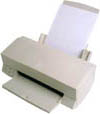The Participle
Recognize a participle when you find one.
Participles come in two varieties: past and present. They are two of the five forms—or principal parts—that every verb has.
Consider the charts below.
Regular Verbs
Infinitive Simple
PresentSimple
PastPast
ParticiplePresent
Participleto giggle giggle(s) giggled giggled giggling to help help(s) helped helped helping to jump jump(s) jumped jumped jumping Irregular Verbs
Infinitive Simple
PresentSimple
PastPast
ParticiplePresent
Participleto bring bring(s) brought brought bringing to sing sing(s) sang sung singing to swim swim(s) swam swum swimming Notice that each present participle ends in ing. This is the case 100 percent of the time.
Past participles, on the other hand, do not have a consistent ending. The past participles of all regular verbs end in ed, but the past participles of irregular verbs vary considerably. Bring and sing, for example, have brought and sung—with wildly different endings—as past participles.
Consult a dictionary whenever you question the past participle form of an irregular verb.
Know the functions of participles.
Participles have three functions in sentences. They can be components of verb phrases, or they can function as adjectives or nouns.
Participles in Verb Phrases
A verb can have as many as four parts. When you form a multipart verb—a verb phrase—you use a combination of auxiliary verbs and participles.
Read these examples:
Our pet alligator ate Mrs. Olsen's poodle.
Ate = simple past tense (no participle).
When we arrived, Mrs. Olsen was beating our alligator over the head with a broom.
Was = auxiliary verb; beating = present participle.
Our pet alligator has been stalking neighborhood pets because my brother Billy forgets to feed the poor reptile.
Has = auxiliary verb; been = past participle; stalking = present participle.
Our pet alligator should have been eating Gator Chow, crunchy nuggets that Billy leaves for him in a bowl.
Should, have = auxiliary verbs; been = past participle; eating = present participle.
Participles as Adjectives
Past and present participles often function as adjectives that describe nouns.
Here are examples:
The crying baby drew a deep breath and sucked in a spider crouching in the corner of the crib.
Which baby? The crying baby. Which spider? The one that was crouching in the corner.
The mangled pair of sunglasses, bruised face, broken arm, and bleeding knees meant Genette had taken another spill on her mountain bike.
Which pair of sunglasses? The mangled pair. Which face? The bruised one. Which arm? The broken one. Which knees? The bleeding ones.
Participles as Nouns
Present participles can function as nouns—the subjects, direct objects, indirect objects, objects of prepositions, and subject complements in sentences. Whenever a present participle functions as a noun, you call it a gerund.
Consider these examples:
Sneezing exhausts Steve, who requires eight tissues and twenty-seven Gesundheits before he is done.
Sneezing = subject of the action verb exhausts.
Valerie hates cooking because scraping burnt gunk out of pans always undermines her enjoyment of the food.
Cooking = direct object of the action verb hates.
We gave bungee jumping a chance.
Bungee jumping = indirect object of the action verb gave.
Joelle bit her tongue instead of criticizing her prom date's powder blue tuxedo.
Criticizing = object of the preposition instead of.
Omar's least favorite sport is water-skiing because a bad spill once caused him to lose his swim trunks.
Water-skiing = subject complement of the linking verb is.
©1997 - 2025 by Robin
L. Simmons
All Rights Reserved.
